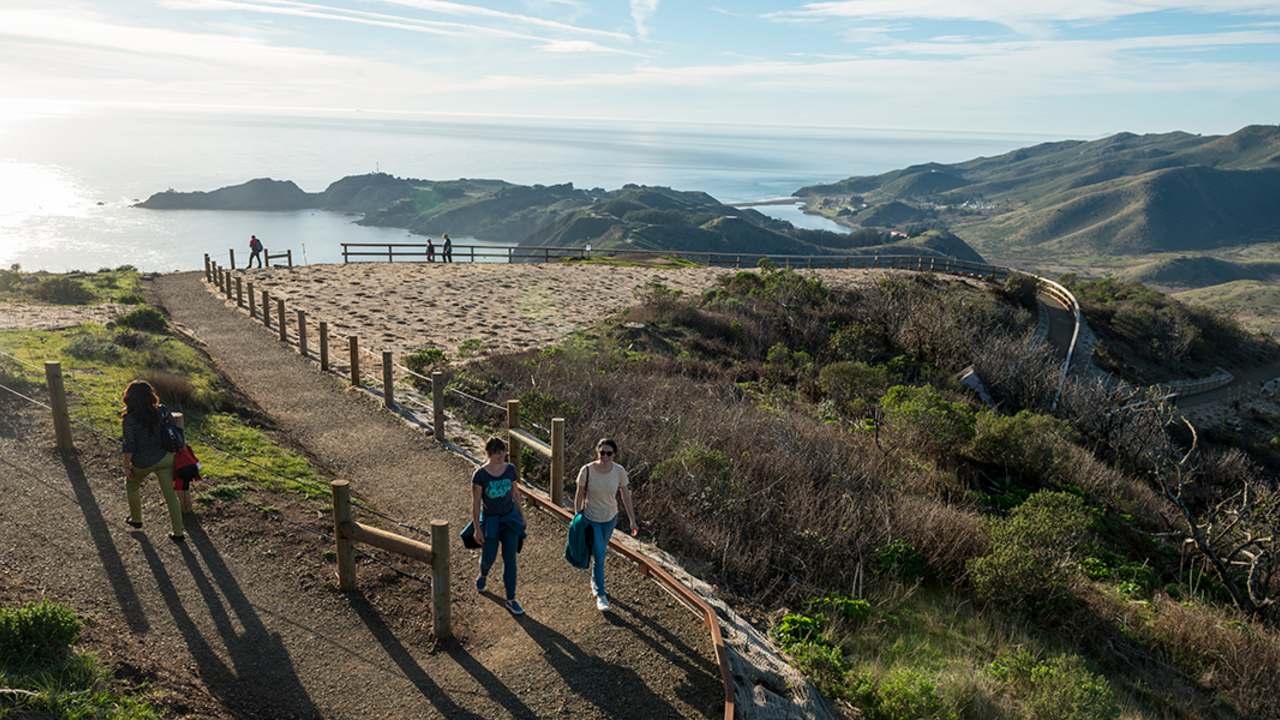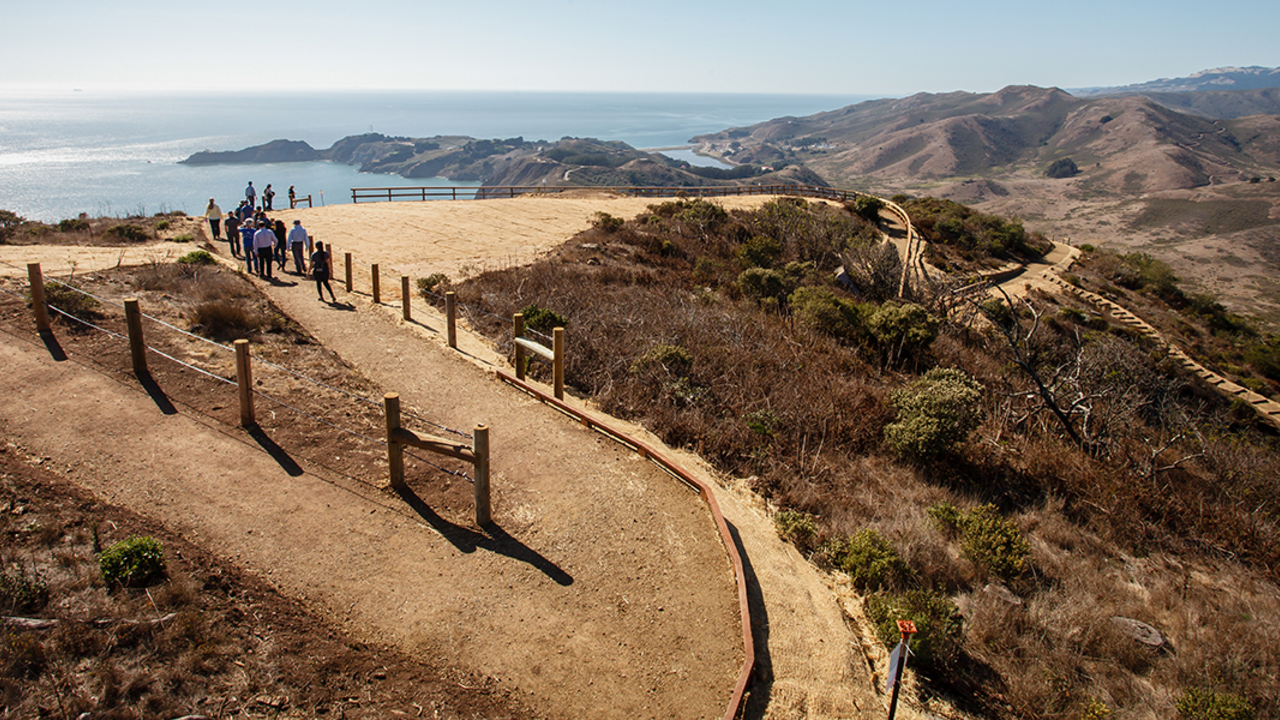New Hawk Hill Trail: Give Holiday Visitors the Gift of “Wow!”

Paul Myers/Parks Conservancy
Thanks to a spectacular new trail, even more visitors can enjoy the soaring, hawk’s-eye view from Hawk Hill.
In September, the National Park Service (NPS) Trail Crew completed a dramatic realignment of the trail to the top of that fittingly named promontory above the Golden Gate Strait.
Now, some of the most eye-popping vistas in the Bay Area—beloved by Golden Gate Raptor Observatory staff and volunteers who annually monitor the fall migration from Hawk Hill—are available to individuals with a wide range of abilities.
“This new trail alignment twists around the whole hill,” says Caroline Christman, the Parks Conservancy’s senior project manager. “You start with views out toward Rodeo Valley, and then you look to the north and you see Hill 88 and the ridge between the Marin Headlands and Tennessee Valley, and finally you come to the top of the hill, with views out toward the ocean and the Golden Gate. It gives you a full 360-degree experience.”
All of this was made possible when the NPS crew—led by Kyle Mackiewicz—replaced a steep and gullying old service road with approximately 1,000 feet of zigzagging new trail. These switchbacks help prevent erosion—and make for an easier ascent to the summit.

“The new design offers a much more gentle and sustainable alignment that is better for visitors—and for the long-term condition of the trail,” says Kirsten Holder, a National Park Service trail planner for Golden Gate.
In fact, the upper segment of Hawk Hill Trail is now “outdoor accessible” by the federal-land guidelines dictated by ABAAS (Architectural Barriers Act Accessibility Standard), with less steep grades and “resting areas” that provide relatively flatter stretches.
“It was very challenging to meet the necessary grades to be an accessible trial,” Christman says.
Christman and Holder “paved the way,” so to speak, for Mackiewicz’s crew to begin work this past March. The team had to contend with the rugged topography and remnant concrete features on the precipitous hillside.
“The NPS trail crew did an awesome job…working around existing site features, and developing creative approaches to meet the steep terrain,” Holder says.
The crew constructed Sutter retaining walls to support the trail, installed handrails to improve visitor safety, and built a new set of stairs along a spur trail. And, powered by the muscle of community volunteers, the crew pounded post-and-cable fencing into the hard chert ground to protect the adjoining coastal scrub/coastal prairie ecosystem.
This winter, Associate Project Manager Kara Mirmelstein of the Parks Conservancy will lead the effort to plant 7,500 native plants in the area—including needlegrass, California phacelia, Pacific aster, and coyote brush. Restoring native vegetation along the trail corridor—as well as shifting the trail itself—will improve habitat for the endangered Mission blue butterfly.
The recently completed trail project is just one phase of a larger restoration vision for Hawk Hill, which began in 2008–09 with the removal of invasive cypress and pine trees. The next phase—improvements to trails through the tunnels and the addition of a footbridge over the decommissioned gun pit—awaits funds that will further enhance visitor experiences and safeguard natural and cultural resources.
Just one visit to this breathtaking site should convince even the most Scrooge-like visitor that Hawk Hill is a treasure well-worth the committed investment.
There's no official trailhead, but you can go through either of the tunnels near the main parking lot for Hawk Hill. The trail is at the end of those tunnels.
